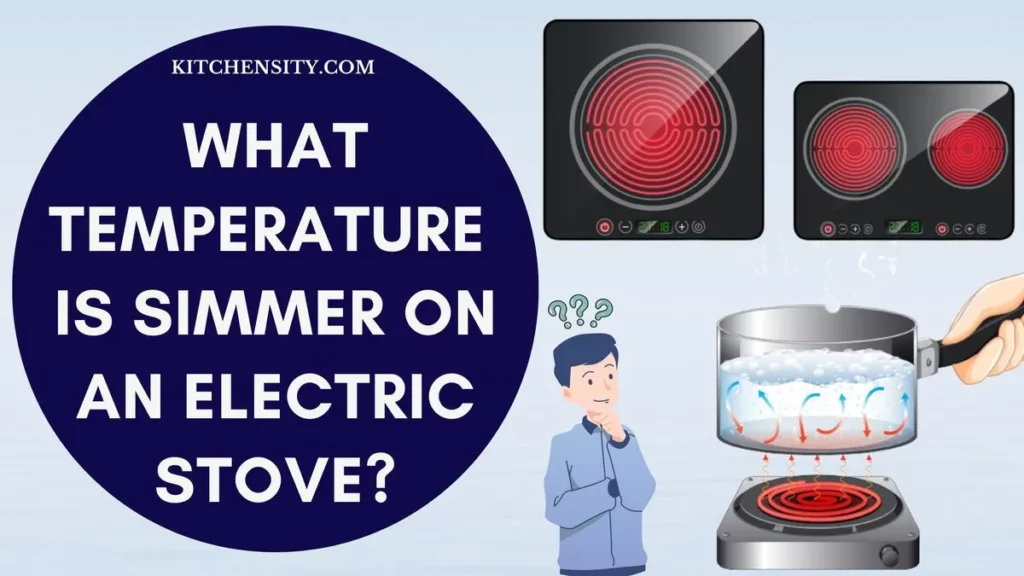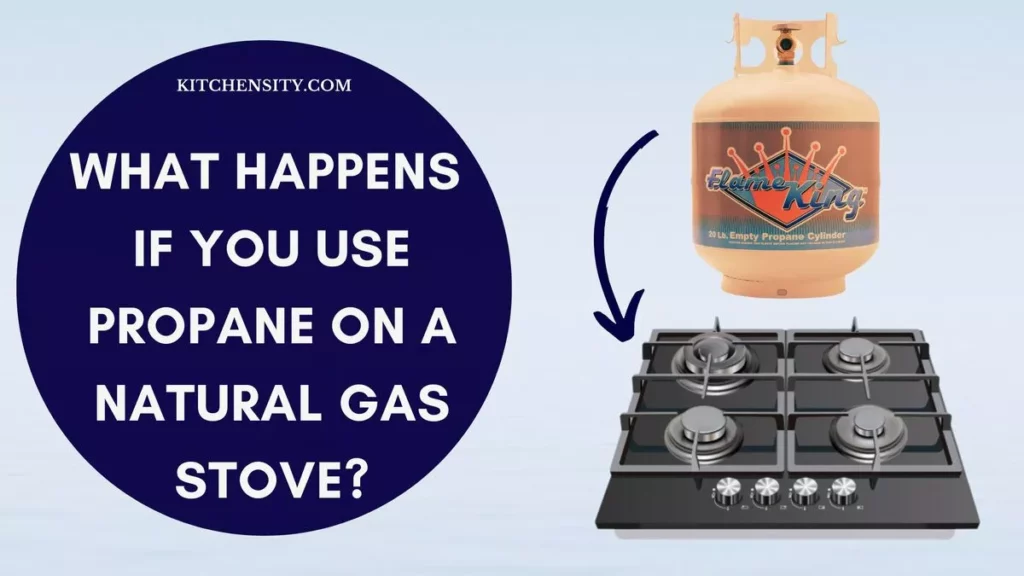In today’s fast-paced world, cooking has become more efficient and enjoyable, thanks to advanced kitchen appliances like infrared gas stoves. These stoves provide instant heat, and precise temperature control, and are environmentally friendly.
However, just like any other kitchen equipment, they require regular cleaning and maintenance to ensure optimal performance and longevity.
In this comprehensive guide, we will walk you through the steps of cleaning an infrared gas stove effectively.

Table of Contents
- 1 How To Clean An Infrared Gas Stove?
- 2 Step-By-Step Guide To Clean An Infrared Gas Stove
- 2.1 Step 1: Gather Your Cleaning Supplies
- 2.2 Step 2: Ensure Safety First
- 2.3 Step 3: Remove Burner Caps And Grates
- 2.4 Step 4: Clean Burner Caps And Grates
- 2.5 Step 5: Wipe The Burner Heads
- 2.6 Step 6: Clean The Control Panel
- 2.7 Step 7: Clean The Cooktop Surface
- 2.8 Step 8: Clean The Exterior
- 2.9 Step 9: Polish And Shine
- 2.10 Step 10: Reassemble The Stove And Check For Leaks
- 3 Common Issues And Troubleshooting For Infrared Gas Stoves
- 4 How To Clean Ceramic Infrared Burner?
- 5 Proper Maintenance Practices For Infrared Gas Stoves
- 6 User Tips And Hacks For Infrared Gas Stoves
- 7 Final Thoughts: How To Clean An Infrared Gas Stove?
- 8 Frequently Asked Questions (FAQs)
How To Clean An Infrared Gas Stove?
To clean an infrared gas stove, turn off the gas supply and allow it to cool. Use a mild soapy water solution and a soft cloth to clean the burners, control panel, and exterior surfaces. Wipe away residue, dry thoroughly, and check for gas leaks before reassembling.
Also Read – What Is An Infrared Gas Stove?
Step-By-Step Guide To Clean An Infrared Gas Stove
Cleaning your infrared gas stove might seem like a daunting task, but with the right approach and a bit of regular maintenance, you can keep it shining like new. Here’s a detailed, step-by-step guide to help you through the process:
Step 1: Gather Your Cleaning Supplies
To begin the process of cleaning your infrared gas stove effectively, start by collecting all the necessary cleaning supplies. Having the right tools and products at your disposal will make the cleaning process smoother and more efficient. Here’s a list of items you’ll need:
- Mild Dish Soap: Choose a gentle, non-abrasive dish soap to help break down grease and grime without damaging the stove’s surface.
- Warm Water: You’ll need warm water for creating soapy solutions and for rinsing off cleaning agents.
- Microfiber Cloths: Microfiber cloths are soft and highly effective for cleaning delicate surfaces without leaving lint or scratches.
- Soft-Bristle Brush: A soft-bristle brush is useful for scrubbing burner caps and grates, removing stubborn stains without causing damage.
- Sponge: Opt for a soft sponge that won’t scratch the stove’s surface but is effective for cleaning various parts of the stove.
- Non-Abrasive Cleaner: Choose a non-abrasive cleaner specifically designed for the material of your stove. Avoid harsh chemicals that could harm the surface.
- Baking Soda (Optional): Baking soda can be used as a natural abrasive to tackle tough stains. It’s safe and eco-friendly.
- Clean Dry Cloth: Keep a clean, dry cloth on hand for wiping off excess moisture after cleaning, leaving a polished finish.
- Safety Gear (Optional): If you’re sensitive to cleaning agents, consider wearing gloves and ensuring the area is well-ventilated.
Also Read – My Gas Stove Making Noise When Off
Step 2: Ensure Safety First
Before you start cleaning your infrared gas stove, it’s crucial to prioritize safety to prevent accidents and injuries. Follow these safety guidelines to ensure a secure cleaning process:
- Turn Off The Gas Supply: Locate the gas supply valve near your stove and ensure it is turned off completely. This step is essential to prevent any gas leaks or accidental ignitions during the cleaning process.
- Allow The Stove To Cool: Make sure the stove has completely cooled down before you begin cleaning. Infrared stoves can retain heat, so waiting ensures you won’t burn yourself while cleaning.
- Ventilate The Area: If possible, open windows and doors to ensure proper ventilation in the kitchen. Good airflow helps dissipate any fumes from cleaning agents, ensuring a safer environment.
- Use Safe Cleaning Agents: Choose mild and non-toxic cleaning agents to avoid inhaling harmful fumes. Avoid using strong chemicals that can be hazardous in poorly ventilated spaces.
- Wear Protective Gear (Optional): If you have sensitive skin or allergies, consider wearing gloves to protect your hands from cleaning agents. Additionally, wearing safety goggles can prevent any cleaning solution from accidentally splashing into your eyes.
- Keep Children And Pets Away: If there are children or pets in your home, ensure they are safely away from the kitchen while you’re cleaning. Cleaning agents and hot surfaces can pose risks to small children and animals.
- Be Cautious Around Electrical Components: If your infrared gas stove has electronic components, such as a digital control panel, be cautious not to let water or cleaning solution seep into these areas. Moisture can damage electronic parts and pose an electrical hazard.
Also Read – How To Fix A Pilot Light On A Gas Stove?
Step 3: Remove Burner Caps And Grates
In this step, you’ll need to carefully remove the burner caps and grates from your infrared gas stove. These components can accumulate grease and grime over time, affecting the stove’s performance. Follow these steps to remove them properly:
- Cool Down Completely: Ensure the stove is completely cool before attempting to remove any parts. Touch the burners gently to confirm they are at room temperature.
- Locate The Burner Caps And Grates: Identify the burner caps and grates on your stove. Typically, burner caps cover the flames, while grates provide support for your cookware. Refer to your stove’s manual if you’re unsure where these components are located.
- Lift The Burner Caps: Gently lift the burner caps off the burners. They are usually placed directly on top of the burner heads. Some models might have them secured with clips, so release the clips if necessary. Place the burner caps aside.
- Remove The Grates: Lift the grates off the stove. Grates are often heavier, so handle them with care. Place them in a sink or a basin where you can clean them thoroughly.
- Soak In Warm, Soapy Water: Fill your sink or basin with warm water and add a small amount of mild dish soap. Place the burner caps and grates in the soapy water to soak. Let them soak for at least 15-20 minutes to loosen the grease and grime.
- Scrub With A Soft-Bristle Brush: After soaking, take a soft-bristle brush and gently scrub the burner caps and grates. Use circular motions to remove stubborn stains and residue. Be thorough but gentle to avoid damaging the surfaces.
- Rinse Thoroughly: Once you’ve scrubbed away the dirt, rinse the burner caps and grates thoroughly with clean, warm water. Ensure all soap residue is washed off.
- Air Dry: Place the clean burner caps and grates on a clean, dry cloth or paper towel to air dry completely. Make sure they are completely dry before placing them back on the stove.
Also Read – How To Fix The Gas Stove Igniter Not Sparking After Cleaning?
Step 4: Clean Burner Caps And Grates
Cleaning the burner caps and grates is a critical part of maintaining your infrared gas stove’s efficiency and safety. Here’s a detailed guide on how to clean them effectively:
- Inspect For Residue: Before cleaning, inspect the burner caps and grates for visible residue, grease, or burnt-on food particles. Use a soft brush or cloth to remove loose debris.
- Soak In Warm, Soapy Water: Fill your sink or basin with warm water and add a mild dish soap. Submerge the burner caps and grates completely. Let them soak for at least 15-20 minutes. The warm, soapy water will help loosen stubborn stains and grease.
- Scrub With A Soft-Bristle Brush: After soaking, take a soft-bristle brush and gently scrub the burner caps and grates. Focus on areas with stubborn stains or residue. Use circular motions and apply gentle pressure to avoid scratching the surfaces. For particularly tough stains, you can create a paste of baking soda and water, apply it, and scrub.
- Rinse Thoroughly: Once you’ve scrubbed away the grime, rinse the burner caps and grates under running water. Ensure all soap residue and baking soda paste are washed off completely.
- Check For Remaining Stains: After rinsing, inspect the burner caps and grates for any remaining stains or residue. If you notice persistent stains, repeat the scrubbing process or use a specialized stove cleaner. Avoid using abrasive materials that could damage the surfaces.
- Dry Completely: Use a clean, dry cloth to pat the burner caps and grates, removing excess water. To ensure thorough drying, you can leave them in a well-ventilated area or use a clean towel to air dry. Make sure they are completely dry before reassembling them on the stove.
- Polish (Optional): For extra shine, you can polish the burner caps and grates with a dry microfiber cloth. This step not only enhances their appearance but also removes any remaining water spots.
Also Read – Why Is My Gas Stove Not Clicking?
Step 5: Wipe The Burner Heads
Cleaning the burner heads of your infrared gas stove is essential for maintaining even heat distribution and efficient cooking. Follow these steps to effectively wipe the burner heads:
- Prepare A Damp Cloth: Dampen a soft cloth with warm, soapy water. Ensure the cloth is not dripping wet but moist enough to clean the burner heads effectively.
- Turn Off The Gas: Double-check that the gas supply to the stove is turned off. Safety is paramount during the cleaning process.
- Gently Wipe The Burner Heads: Carefully wipe the burner heads with a damp cloth. Use gentle, circular motions to remove any debris, spills, or residue. Be cautious not to apply excessive pressure, as infrared burners are delicate.
- Use A Soft Brush (Optional): If there are stubborn stains or dried spills, you can use a soft-bristle brush to gently scrub the burner heads. Avoid wire brushes or abrasive materials, as they can damage the surface.
- Check The Openings: Inspect the small openings on the burner heads. These openings allow the gas to flow and create a flame. If you notice any blockages, use a straightened paperclip or a small, soft brush to carefully clear the openings. Do this gently to avoid enlarging the holes.
- Dry The Burner Heads: After wiping and cleaning, use a dry, clean cloth to pat the burner heads, ensuring they are completely dry. Moisture can interfere with the burner’s performance, so thorough drying is essential.
- Inspect For Damage: While cleaning, inspect the burner heads for any signs of damage, such as cracks or deformities. If you notice any issues, it’s best to consult a professional technician for repairs or replacements.
- Reassemble Carefully: Once the burner heads are clean and dry, reassemble them back onto the stove. Ensure they are correctly aligned and securely placed to avoid any gas leaks.
Also Read – Why Gas Stove Won’t Light But Smells Gas?
Step 6: Clean The Control Panel
The control panel of your infrared gas stove requires gentle yet thorough cleaning to ensure proper functionality and a polished appearance. Follow these steps to clean the control panel effectively:
- Prepare A Mild Soapy Water Solution: Mix a small amount of mild dish soap with warm water in a bowl. Dip a soft cloth or sponge into the soapy water solution. Wring out excess water to avoid dripping.
- Turn Off The Gas Supply: Before cleaning the control panel, ensure the gas supply to the stove is turned off. This step is crucial for your safety during the cleaning process.
- Wipe The Control Knobs: Gently wipe the control knobs with a damp cloth or sponge. Use light pressure to remove any dirt, grease, or residue. Pay attention to the areas around the knobs where spills tend to accumulate.
- Clean The Display Screen: If your stove has a digital display screen, dampen a microfiber cloth with the soapy water solution. Wipe the screen gently, avoiding excessive moisture near the edges. Use a dry cloth to remove any remaining moisture for a streak-free finish.
- Detail The Control Panel Edges: Use a soft brush or a cotton swab dampened in the soapy water solution to clean the edges and crevices of the control panel. These areas often trap dust and grime, so thorough cleaning is essential.
- Dry The Control Panel: After cleaning, use a dry, clean cloth to wipe the control panel, ensuring it is completely dry. Moisture near electrical components can be hazardous and interfere with the stove’s operation.
- Polish (Optional): For a polished finish, you can use a microfiber cloth to buff the control panel gently. This step enhances the appearance and removes any remaining streaks.
- Inspect For Functionality: Once the control panel is dry, turn on the gas supply and test each knob and button for functionality. Ensure they turn smoothly and respond as expected.
- Use Control Panel Covers (Optional): Consider using control panel covers to prevent spills and splatters directly onto the control panel. These covers are removable and can be cleaned separately.
Also Read – How To Fix A Yellow Flame On A Gas Stove?
Step 7: Clean The Cooktop Surface
Cleaning the cooktop surface of your infrared gas stove is essential for maintaining its appearance and ensuring efficient cooking. Here’s how you can clean the cooktop surface effectively:
- Choose The Right Cleaning Solution: Select a non-abrasive cleaner specifically designed for your stove’s surface. Alternatively, you can create a cleaning solution by mixing warm water with a small amount of mild dish soap. Avoid harsh chemicals or abrasive cleaners that can damage the surface.
- Turn Off The Gas Supply: Before cleaning the cooktop surface, turn off the gas supply to the stove. Safety is paramount; ensuring there is no gas flow prevents any accidental ignitions during the cleaning process.
- Apply The Cleaning Solution: Dampen a soft sponge or cloth with the cleaning solution. Gently apply the solution to the cooktop surface. Focus on areas with stains, spills, or dried-on residue. Avoid allowing excess water to seep into the burner openings or control panel.
- Scrub Gently: Use a damp sponge or cloth to scrub the surface gently. For stubborn stains, you can use a soft-bristle brush. Apply light pressure and circular motions to lift the dirt without scratching the surface.
- Pay Attention To Burner Openings: Be cautious around the burner openings. Use a cotton swab or a soft brush to clean these areas thoroughly. Ensuring the openings are clear of debris promotes even heat distribution.
- Wipe-Off Excess Cleaning Solution: After scrubbing, use a clean, damp cloth to wipe off excess cleaning solution from the cooktop surface. Rinse the cloth frequently to remove dirt and soap residue.
- Dry The Surface: Use a dry, clean cloth to pat the cooktop surface, ensuring it is completely dry. Moisture can interfere with the burners’ performance, so thorough drying is crucial.
- Polish (Optional): For a polished finish, you can use a microfiber cloth to buff the cooktop surface gently. This step not only enhances the appearance but also removes any remaining streaks.
- Inspect For Residue: After drying, inspect the cooktop surface for any leftover residue. If you notice any, repeat the cleaning process using a clean cloth and water until the surface is completely clean.
- Recheck Burner Openings: Double-check the burner openings to ensure they are clear and free from any cleaning residue. A clear passage for gas is vital for proper ignition and flame consistency.
Also Read – Orange Flame On The Gas Stove: Causes And Fixes
Step 8: Clean The Exterior
Cleaning the exterior of your infrared gas stove not only enhances its appearance but also ensures a hygienic cooking environment. Here’s how to clean the exterior effectively:
- Select The Right Cleaner: Choose a cleaner suitable for the exterior material of your stove. For stainless steel surfaces, a mild stainless steel cleaner is ideal. For other materials, use a cleaner recommended by the stove’s manufacturer.
- Turn Off The Gas: Before cleaning, ensure the gas supply to the stove is turned off. This step is essential for your safety during the cleaning process.
- Dampen A Cloth: Dampen a soft, clean cloth with the chosen cleaner. Make sure the cloth is not dripping wet but moist enough to clean effectively.
- Wipe Down The Exterior: Gently wipe down the entire exterior surface of the stove with a damp cloth. Pay attention to areas prone to fingerprints, spills, or splatters. Use smooth, even strokes to avoid streaks.
- Focus On Stubborn Stains: For stubborn stains or dried spills, apply a small amount of the cleaner directly onto the stain. Let it sit for a few minutes to loosen the residue, then gently wipe it away with a damp cloth. Avoid using abrasive pads or harsh scrubbers to prevent scratches.
- Detail Edges And Handles: Use a cotton swab or a soft brush dampened with the cleaner to clean the edges, corners, and handles of the stove. These areas often accumulate dirt and grime and require detailed cleaning.
- Dry With A Clean Cloth: After cleaning, use a dry, clean cloth to wipe down the entire exterior, removing any excess cleaner and moisture. Proper drying prevents water spots and streaks.
- Polish (Optional): If your stove’s exterior is made of stainless steel, you can use a stainless steel polish to add shine. Apply the polish following the manufacturer’s instructions and buff the surface with a clean, dry cloth.
- Inspect For Shine: After cleaning and drying, inspect the exterior for a clean, polished shine. If necessary, repeat the cleaning process to achieve the desired results.
- Check Control Knobs And Buttons: Ensure the control knobs and buttons are clean and free from any cleaning residue. Use a cotton swab or a soft cloth to clean these areas.
Also Read – Why Electric Stoves Take Forever To Boil Water?
Step 9: Polish And Shine
Polishing and shining your infrared gas stove not only enhances its aesthetic appeal but also provides a protective layer, making future cleaning easier. Here’s how to polish and shine your stove effectively:
- Choose The Right Polish: Select a polish suitable for the material of your stove. For stainless steel surfaces, use a stainless steel polish. For other materials, choose a polish recommended by the stove’s manufacturer. Always follow the manufacturer’s guidelines.
- Apply A Small Amount Of Polish: Put a small amount of the polish on a soft, clean cloth. Avoid applying the polish directly onto the stove to prevent excess buildup.
- Gently Apply The Polish: Using the cloth, apply the polish to the stove’s surface. Use smooth, circular motions to distribute the polish evenly. Focus on areas with visible fingerprints, smudges, or water spots. Be gentle to avoid scratching the surface.
- Buff The Surface: After applying the polish, use a separate, clean cloth to buff the surface. Buffing helps remove excess polish and brings out a brilliant shine. Use firm but gentle pressure and continue buffing until the surface shines brightly.
- Pay Attention To Detail: Use a cotton swab or a soft brush dampened with polish to reach detailed or intricate parts of the stove, such as grooves, corners, and handles. Thoroughly polish these areas to ensure a consistent shine across the entire stove.
- Inspect For Shine: After buffing, inspect the stove for a glossy finish. Check for any remaining streaks or spots. If needed, go over the surface once more with a clean, dry cloth to eliminate any residue.
- Maintain Regular Polishing: Depending on usage and environmental factors, consider polishing your stove at least once a month or as recommended by the manufacturer. Regular polishing maintains the stove’s appearance and protects it from stains and corrosion.
- Avoid Excess Polish: Be mindful not to use excessive polish, as it can leave a sticky residue that attracts dirt. Use a minimal amount and spread it evenly for the best results.
Also Read – How To Properly Vent A Gas Stove?
Step 10: Reassemble The Stove And Check For Leaks
Once you have thoroughly cleaned and polished the components of your infrared gas stove, it’s time to reassemble them and ensure there are no gas leaks. Follow these steps carefully:
- Dry All Components: Ensure that all the cleaned components, including burner caps, grates, and control knobs, are completely dry before reassembly. Moisture can interfere with the stove’s performance.
- Reattach Burner Caps And Grates: Place the dried burner caps back onto the burner heads. Ensure they are properly aligned and securely seated. Next, position the grates over the burners. Double-check their placement to ensure they provide stable support for cookware.
- Reconnect Control Knobs: Carefully slide the control knobs back onto their respective stems. Ensure they fit snugly but can be turned easily to adjust the flame.
- Turn On The Gas Supply: Turn on the gas supply to the stove. Do this slowly and attentively. Listen for any unusual hissing sounds, which could indicate a gas leak. If you smell gas, turn off the supply immediately and ventilate the area before attempting to fix the issue.
- Check For Leaks: Perform a leak check by applying a soap and water solution to the connections between the gas supply line and the stove. If there is a leak, you’ll see bubbles forming at the connection points. If you detect a leak, turn off the gas supply and tighten the connections carefully. If the leak persists, contact a professional technician for assistance.
- Test Each Burner: Turn on each burner individually to check for proper ignition and a steady flame. Ensure there are no irregularities in the flame, such as flickering or uneven patterns. A consistent, blue flame indicates a well-functioning burner.
- Verify Control Panel Functions: Test all control panel functions, including temperature adjustment and timer settings. Confirm that each button or dial responds appropriately.
- Inspect For Stability: Check that all reassembled components, including burner caps, grates, and control knobs, are stable and securely in place. Any loose parts should be repositioned and tightened to prevent accidents.
By following these steps, you ensure that your infrared gas stove is safely reassembled, and you’ve conducted a thorough check for gas leaks. Regular maintenance, including proper cleaning and leak checks, keeps your stove in excellent working condition, providing efficient and safe cooking experiences.
Also Read – Brass Burners Vs Cast Iron Burners
Common Issues And Troubleshooting For Infrared Gas Stoves
Infrared gas stoves are known for their efficiency and fast cooking, but like any appliance, they can face occasional issues. Here are some common problems users might encounter and troubleshooting steps to resolve them:
1. Uneven Heating:
- Issue: One burner heats more than the others or heats unevenly.
- Troubleshooting: Check for blockages in the burner openings. Clean them carefully with a soft brush. If the issue persists, it could be a gas flow problem. Contact a technician to inspect the gas supply lines.
2. Ignition Problems:
- Issue: Burners don’t ignite when turned on.
- Troubleshooting: Ensure the gas supply is on. Check if the igniter is clean and free from grease. If the igniter is clicking but the burner doesn’t ignite, there might be a blockage. Clean the burner holes and try again. If the problem continues, the igniter might be faulty and needs replacement.
3. Gas Smell:
- Issue: You detect the smell of gas around the stove.
- Troubleshooting: Turn off the gas supply immediately. Check all connections for leaks. Apply a soap and water solution to connections; if bubbles form, there’s a leak. Tighten connections carefully. If the smell persists, contact a professional technician to inspect the stove and gas lines.
4. Burner Flame Irregularities:
- Issue: The flame is flickering or has an irregular pattern.
- Troubleshooting: Clean the burner heads and ensure they are properly aligned. Check for blockages in the gas supply pipes. If the irregularities persist, it could be a gas pressure issue, requiring a professional assessment.
5. Control Panel Malfunctions:
- Issue: Buttons or dials on the control panel are unresponsive.
- Troubleshooting: Check for loose or disconnected wires behind the control panel. If the connections are secure and the issue persists, there might be an electrical problem. Consult a technician for repairs.
6. Overheating:
- Issue: The stove gets excessively hot during use.
- Troubleshooting: Ensure proper ventilation in the kitchen. Check that the burner caps and grates are placed correctly. If the stove continues to overheat, it might be a problem with the thermostat. Contact the manufacturer or a technician for assistance.
7. Peculiar Noises:
- Issue: Unusual noises, like hissing or clicking, are heard when the stove is in use.
- Troubleshooting: Hissing sounds could indicate a gas leak, and clicking might suggest issues with the igniter. Turn off the gas immediately and contact a professional technician for inspection and repairs.
Always prioritize safety. If you are unsure about troubleshooting any issues or if problems persist after attempted fixes, it’s best to contact a qualified technician or the stove’s manufacturer for professional assistance. Regular maintenance and prompt attention to problems ensure the longevity and efficient performance of your infrared gas stove.
Also Read – How Long Can You Leave An Electric Stove On?
How To Clean Ceramic Infrared Burner?
Cleaning a ceramic infrared burner is crucial to maintain its efficiency and ensure safe and consistent cooking. Here’s a step-by-step guide to help you clean your ceramic infrared burner effectively:
- Turn Off And Disconnect: Before cleaning, ensure the ceramic infrared burner is completely cool. Turn off the gas supply and disconnect the burner from the gas line if possible. Safety is paramount.
- Remove Loose Debris: Use a soft brush or cloth to remove any loose debris, ashes, or food particles from the surface of the ceramic burner. Be gentle to avoid scratching the ceramic material.
- Use Mild Detergent: Prepare a solution of mild dish soap and warm water. Dampen a soft cloth or sponge in the soapy water. Avoid using harsh chemicals or abrasive cleaners, as they can damage the ceramic surface.
- Gently Wipe The Surface: Wipe the ceramic surface with a damp cloth or sponge. Use gentle circular motions to remove grease, stains, and residue. For stubborn spots, you can apply a paste of baking soda and water, let it sit for a few minutes, and then scrub gently.
- Avoid Water Intrusion: While cleaning, be cautious not to let excess water seep into the burner openings. Excessive moisture inside the burner can cause damage and disrupt the gas flow.
- Rinse Thoroughly: Once you’ve cleaned the ceramic surface, rinse the burner thoroughly with clean water. Ensure all soap residue and baking soda paste are washed away completely.
- Dry Completely: Use a clean, dry cloth to pat the ceramic burner, removing excess water. To ensure thorough drying, you can leave it in a well-ventilated area or use a clean towel to air dry.
- Inspect For Residue: After drying, inspect the ceramic surface for any remaining residue or stains. If you notice persistent stains, repeat the cleaning process using a clean cloth and water until the surface is completely clean.
- Reassemble Carefully: Once the ceramic infrared burner is clean and dry, reassemble it back into the gas stove. Ensure it is correctly aligned and securely placed to avoid any gas leaks.
- Perform A Test: Turn on the gas supply and test the ceramic burner. Check for proper ignition and a steady flame. Ensure there are no irregularities in the flame, such as flickering or uneven patterns.
By following these steps, you can clean your ceramic infrared burner effectively, ensuring it operates efficiently and safely during your cooking endeavors. Regular cleaning and maintenance not only enhance the burner’s performance but also prolong its lifespan, providing you with consistent and enjoyable cooking experiences.
Also Read – Do Gas Stoves Turn Off Automatically?
Proper Maintenance Practices For Infrared Gas Stoves
Maintaining your infrared gas stove regularly ensures optimal performance, extends its lifespan, and keeps it safe to use. Here are essential maintenance practices to follow:
- Regular Cleaning: Clean your stove after every use. Wipe spills and splatters immediately to prevent them from hardening and becoming difficult to clean. Follow the steps outlined earlier for detailed cleaning instructions.
- Inspect Burner Caps And Grates: Periodically inspect burner caps and grates for signs of wear or damage. Replace any components showing excessive wear to maintain efficient heat distribution.
- Check Gas Connections: Regularly inspect the gas connections leading to the stove. Look for signs of leaks, such as hissing sounds or a smell of gas. If you detect a leak, turn off the gas supply and contact a professional technician for repairs.
- Clean Burner Heads: Clean the burner heads and openings regularly to ensure a consistent flame. Use a soft brush or a cotton swab to remove any debris, dirt, or food particles that might block the openings.
- Inspect Control Panel: Check the control panel for loose buttons, cracked screens, or faulty dials. Repair or replace damaged components promptly to avoid further issues.
- Ventilation Maintenance: Ensure proper ventilation in your kitchen. Adequate airflow prevents the accumulation of gas fumes and ensures the stove operates safely. Clean or replace kitchen exhaust filters regularly.
- Avoid Harsh Cleaners: When cleaning your stove, avoid abrasive or corrosive cleaning agents that can damage the surfaces. Stick to mild dish soap, warm water, and non-abrasive cloths or sponges.
- Seasonal Maintenance: Perform a more thorough inspection and cleaning of your stove at least once a season. This includes checking internal components for signs of wear, cleaning out any accumulated debris, and ensuring all parts are functioning correctly.
- Protect Control Panel: If your stove has a digital control panel, consider using control panel covers to prevent spills and splatters from reaching the electronic components. These covers are removable and can be cleaned separately.
- Professional Inspections: Arrange for professional inspections and maintenance at least once a year, especially if your stove is used frequently. Certified technicians can identify and address potential issues before they become major problems.
Also Read – What Does Simmer Look Like?
User Tips And Hacks For Infrared Gas Stoves
Users often discover innovative ways to enhance their cooking experience and maintain their infrared gas stoves efficiently. Here are some user tips and hacks to make the most out of your appliance:
- Preheat Efficiently: Infrared gas stoves heat up quickly. To save energy, preheat the stove only when necessary. Prepping ingredients beforehand can reduce cooking time.
- Utilize Flat Cookware: Opt for flat-bottomed cookware when using an infrared gas stove. Flat surfaces ensure even heat distribution, maximizing the stove’s efficiency.
- Invest In Cast Iron: Cast iron cookware retains and distributes heat evenly. It’s an excellent choice for infrared stoves as it helps maintain stable temperatures for various cooking methods.
- Avoid Overcrowding: Crowding the cooking surface can impede heat flow. Cook in batches if necessary, ensuring each item has enough space for proper cooking.
- Use Magnetic Spice Jars: Magnetic spice jars on the side of your stove keep essential seasonings within reach, making cooking more convenient.
- Simmer With Diffusers: Infrared stoves offer intense heat, making simmering challenging. Use heat diffusers or simmer mats to regulate heat for delicate dishes.
- Regularly Clean Burner Heads: Clean burner heads and openings frequently to prevent clogs, ensuring a consistent flame and efficient cooking.
- Opt For Cast Iron Grates: If possible, choose infrared gas stoves with cast iron grates. They provide a durable and stable surface for cookware.
- Leverage The Rapid Heating: Take advantage of the quick heating to stir-fry, sear, or boil water rapidly. This speed enhances the efficiency of your cooking process.
- Invest In Cookware Sets: Specialized cookware sets designed for infrared stoves often optimize heat conduction. Investing in such sets can enhance your cooking experience.
- Use Residue-Free Cleaners: When cleaning, choose residue-free cleaners specifically designed for infrared stoves. They ensure a clean surface without harmful chemical residues.
- Regularly Check Gas Supply: Periodically inspect the gas supply line for any signs of wear or damage. A secure gas supply is crucial for the stove’s performance and safety.
- Season Cast Iron Cookware: Seasoning cast iron cookware maintains its non-stick properties and prevents rust. Regularly season your cast iron pans for optimal use.
- Explore Cooking Techniques: Experiment with various cooking techniques like grilling, sautéing, and stir-frying to utilize the stove’s versatile capabilities.
- Store Cookware Efficiently: Store cookware and utensils close to your stove in an organized manner. Easy access to your tools can streamline your cooking process.
Also Read – What Temperature Is Simmer On An Electric Stove?
Final Thoughts: How To Clean An Infrared Gas Stove?
In conclusion, mastering the art of cleaning and maintaining your infrared gas stove ensures not only a sparkling kitchen but also safe, efficient, and enjoyable cooking experiences. By following the step-by-step guide provided in this article, you’ve learned the essential techniques to keep your infrared gas stove in pristine condition.
From gathering your cleaning supplies and ensuring safety to meticulously cleaning burner caps, grates, and control panels, you’ve discovered the secrets to a well-maintained stove. Moreover, understanding common issues and troubleshooting methods equips you with the knowledge to address challenges promptly, ensuring the longevity of your appliance.
Infrared gas stoves offer rapid heating and precise temperature control, making them a favorite among culinary enthusiasts. Their efficiency, however, relies heavily on regular upkeep. Proper maintenance practices, such as inspecting gas connections, preheating efficiently, and investing in quality cookware, contribute significantly to the stove’s optimal performance.
Additionally, the user tips and hacks shared here provide valuable insights from experienced users, enhancing your cooking techniques and efficiency further. Utilizing magnetic spice jars, leveraging rapid heating, and experimenting with various cooking styles open up a world of culinary possibilities.
Remember, a well-maintained infrared gas stove not only enhances your cooking adventures but also ensures your kitchen remains a safe and inviting space. By incorporating the knowledge and techniques from this article into your routine, you’re not just cleaning a stove – you’re enhancing your cooking journey, one efficient flame at a time.
So, armed with this comprehensive guide, embark on your cooking ventures with confidence, knowing that your infrared gas stove is not just a kitchen appliance but a reliable partner in your culinary endeavors.
Happy Cooking!
Also Read – How To Simmer On An Electric Stove?
Frequently Asked Questions (FAQs)
-
How Often Should I Clean My Infrared Gas Stove?
It’s advisable to clean your infrared gas stove at least once a week to prevent grease buildup and maintain its efficiency.
-
Can I Use Abrasive Cleaners On My Infrared Gas Stove?
No, abrasive cleaners can damage the surface of the stove. Stick to mild dish soap, warm water, and non-abrasive cleaners.
-
Is It Safe To Clean The Control Panel With Water?
Yes, you can use a damp cloth with mild soapy water to clean the control panel. Just be cautious not to let water seep into the controls.
-
What Should I Do If I Detect A Gas Leak After Cleaning?
If you suspect a gas leak, turn off the gas supply immediately, ventilate the area, and contact a professional technician to assess and fix the issue.
-
Can I Clean The Burner Caps And Grates In The Dishwasher?
It’s not recommended to clean these components in the dishwasher as the high heat and water pressure could damage them. Hand washing with mild soap and water is ideal.
🔧 Stove Expert | 🔥 Gas Guru | 🏠 DIY Enthusiast | 🎨 Painter Extraordinaire
John Davis is your go-to source for all things stoves, from expert repairs to maintenance tips. With a deep understanding of gas systems, including natural and propane, John ensures your kitchen stays cooking safely. His passion for DIY home and kitchen projects shines through his stunning paint transformations. Trust John to bring warmth and functionality to your home, one stove at a time.






